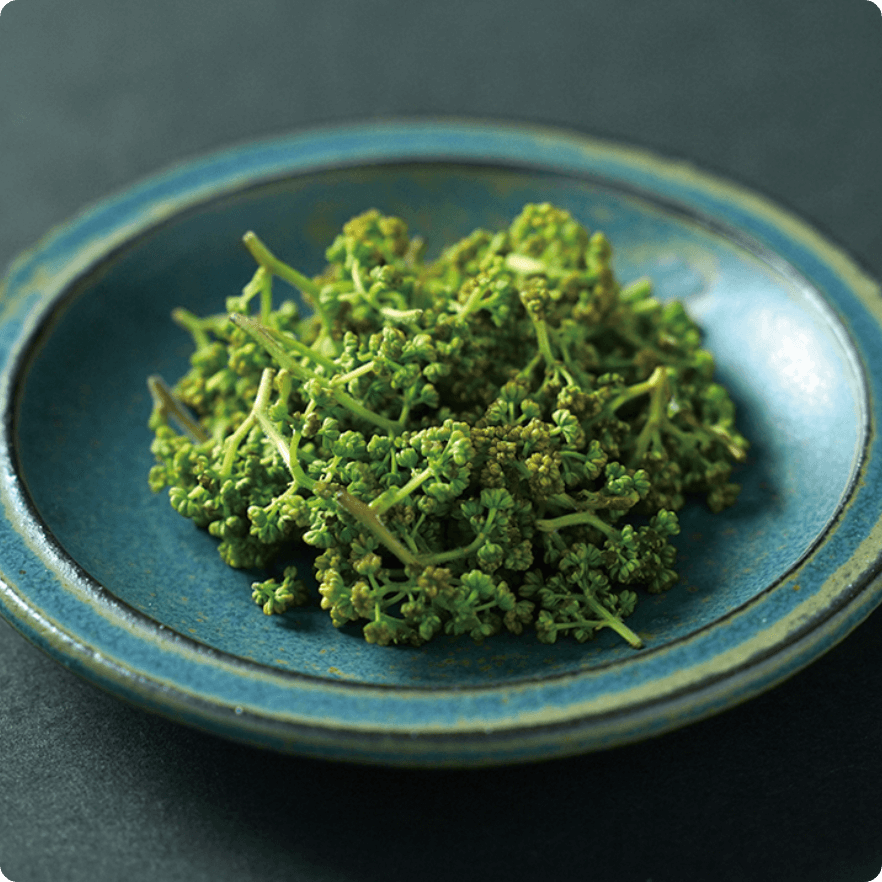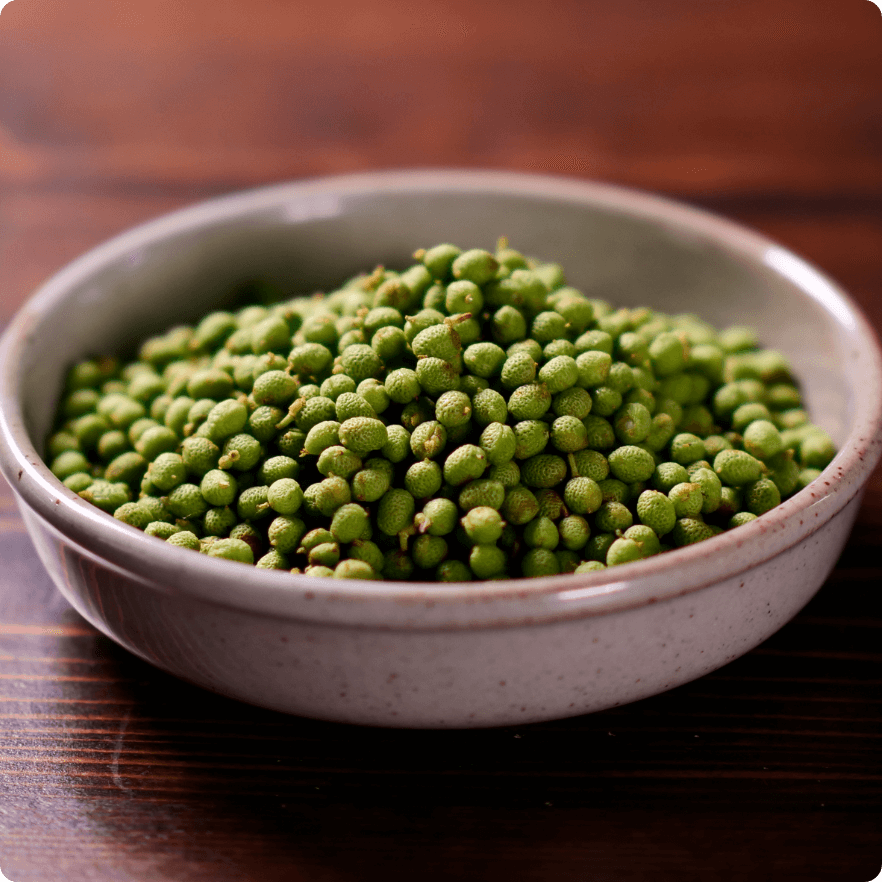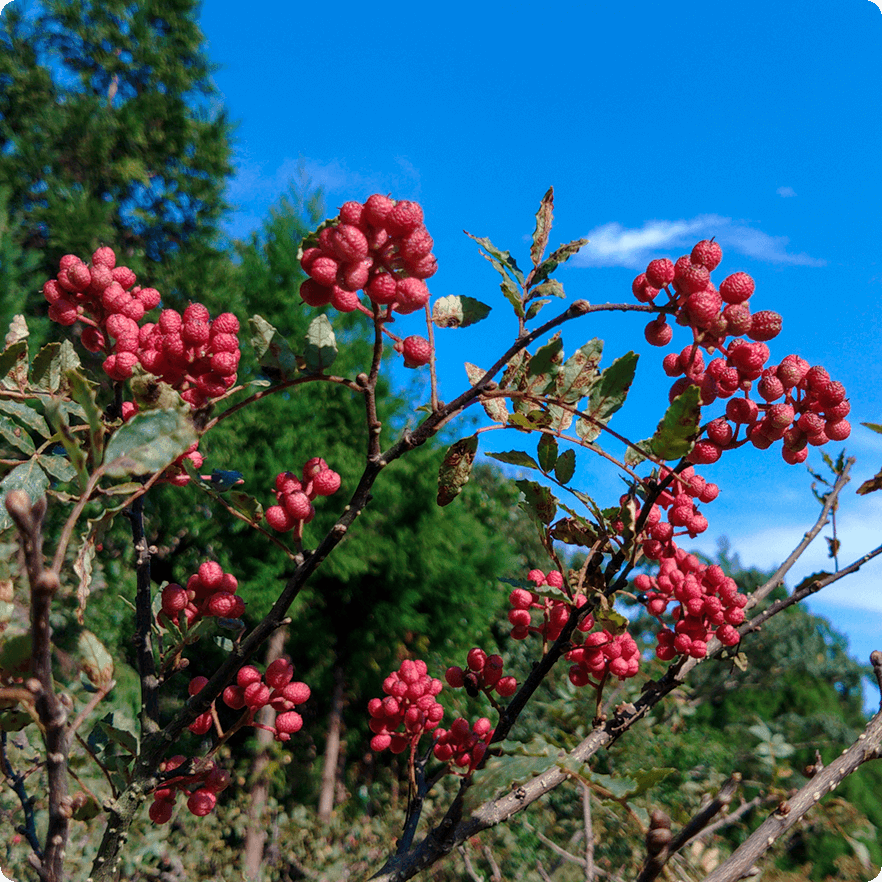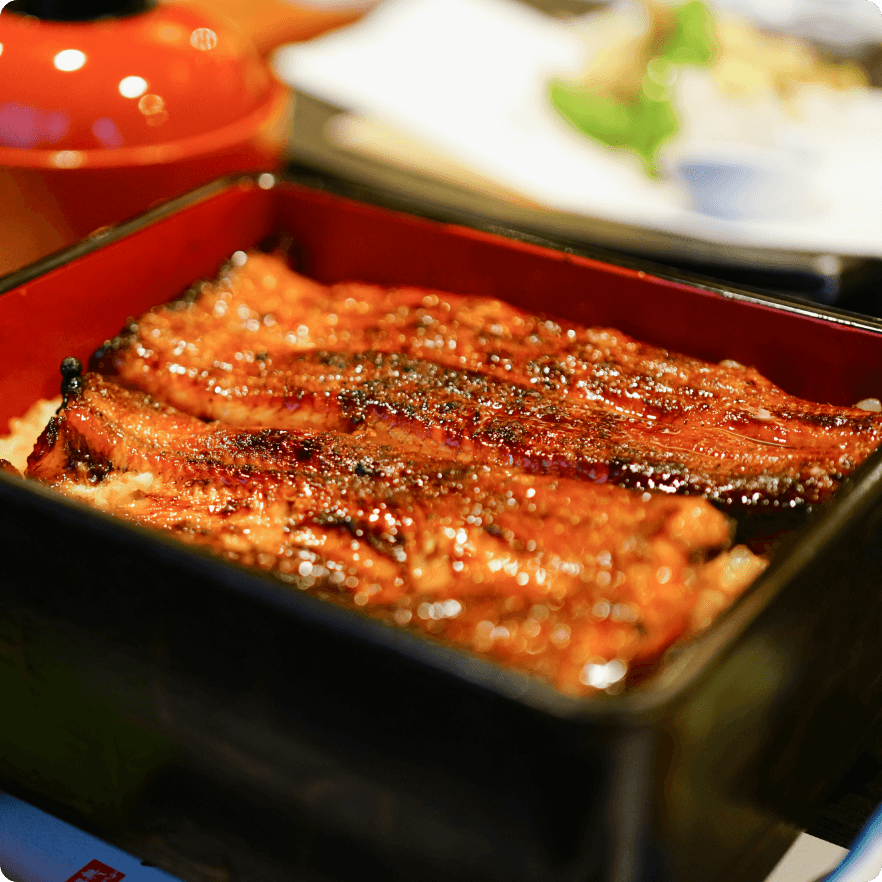The proverb goes, “Sansho has small grains, but still packs a peppery punch,” meaning that even something small can be strong willed or have great power. Sansho is given as a metaphor to warn against underestimating people; but literally, even though sansho has small grains, if you add just a little bit, it can bring out the colors and enhance a dish.
Sansho is a deciduous tree originating in Japan, and is a plant from the same family of citrus that mandarin oranges and yuzu belong to. It is thought that sansho has been consumed since the Jomon period (10,000 BCE–300 BCE), as traces of seeds were discovered inside earthenware from that time. Hajikami, the former name of sansho, was recorded in the Kojiki (712; Records of Ancient Matters), in a passage that can be translated as, “the hajikami that grows below the fence makes the mouth go numb.”
Sansho, long used as a medicine and spice, is still put to use in modern times—the shoots and young leaves as a Japanese herb, and the fruit in Japanese spice. One of the charms of sansho surely is in the enjoyment of seeing it change form along with the changing seasons.
-

- Hanazansho (Flower)
- Harvest Period:
Mid-April
The sansho pepper has both male and female flowers. It has a sweet and elegant fragrance, but the yield is small and quite valuable. The female flowers in particular are a precious commodity that is rarely distributed because they do not bear fruit once they are picked. The male flowers have a fine fragrance and moderate stimulation, while the female flowers are sweeter. Dishes using Hanazansho are served at high-end kappo and kaiseki restaurants.
-

- Hazansho (Leaf)
- Harvest Period:
April to May
The term “Ki-no-me” refers to tree sprouts, but in Japanese cuisine, it mainly refers to the young leaves of the sansho pepper tree, which not only have a unique aroma, but also add a beautiful color and shape to dishes. It has been used as a staple in many Japanese dishes, such as in soup bowls and tempura dishes. Kinome miso, made by grinding the leaves, is an indispensable ingredient in takenoko dishes.
-

- Mizansho
- Harvest Period:
May to June
The fresh, yellow-green peppers are harvested in early summer. The berries are prepared while they are still fresh, and are then cooked into Chirimen sansho or Tsukudani. The berries are also used to add flavor and as a preservative in nukadoko. Sansho can be frozen for up to one year.
-

- Dried Sansho
- Harvest Period:
July-August
The dried berries of the harvested sansho, the shaft and seeds can be removed and ground in a mortar or mill to make powdered sansho. Dried sansho made from fresh berries will retain its bright green color when grounded. Powdered Sansho is not only pungent but also has a strong and refreshing aroma. Its flavor and color have attracted the attention of chefs and pastry chefs alike, and it is used in a variety of dishes and desserts in Japan and abroad.
-

- Red Sansho
- Harvest Period:
Late September to Mid-October
Harvested from sansho that has been fully ripened on the trees until autumn. Compared to green dried sansho, it is characterized by its elegant, clean and rich taste. It is a rare product as there are only a few farmers who produce it, as stress is placed on the tree by letting the fruit grow until autumn.
In addition, in some regions, the tree bark is simmered in tsukudani. The wood can be turned into wooden pestles, and as everything can be put to good use, it is said that no part of a sansho tree goes to waste.
Sansho has been used in Japan as a Japanese spice since long ago, and is known abroad as Japanese Pepper. Sansho pairs well too with sweets and oils and fats, so it can be employed, not only in cooking, but also in confectionery including chocolate and gelato, and its spread has been seen in Europe, where cooking with spices is customary.
 Kabayaki-style grilled eel
Kabayaki-style grilled eel Chirimen sansho (small dried sardines with sansho)
Chirimen sansho (small dried sardines with sansho)


 What is budo sansho ?
What is budo sansho ?